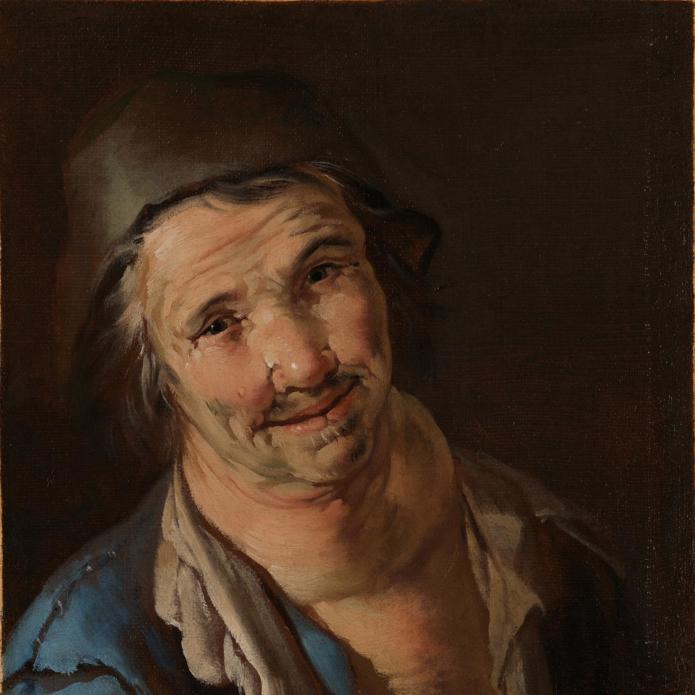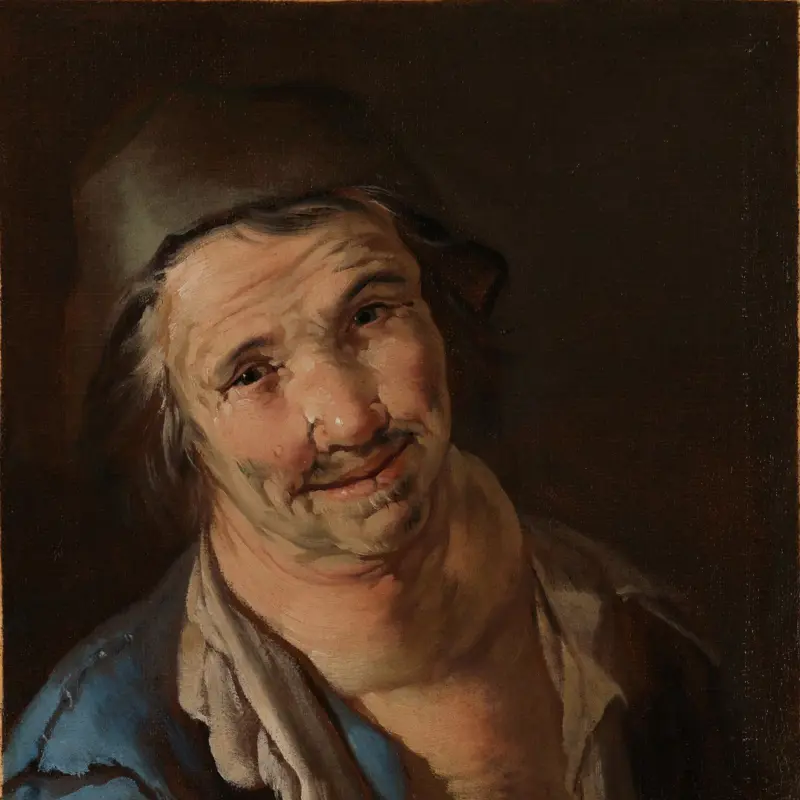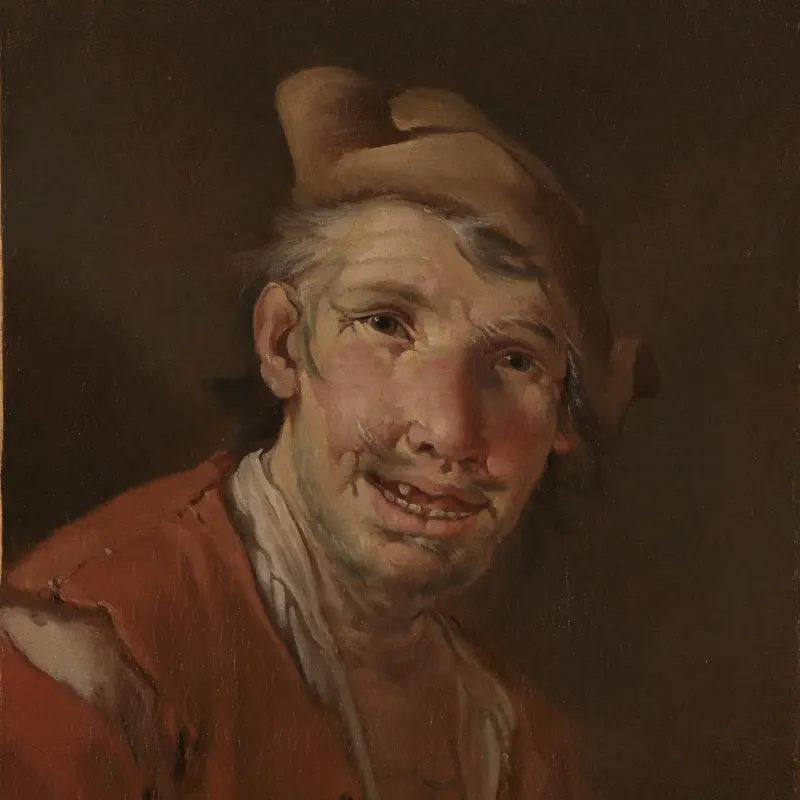Giacomo Francesco Cipper, 'Head of a Man in Blue', early 18th century
About the work
Overview
A man looks out at us with his shirt opened to reveal his neck, disfigured by a goitre (a swelling caused by an enlarged thyroid gland). Despite suffering this medical condition, he has an amused expression and the artist has portrayed him sympathetically. He is evidently poor, as can be seen by his ragged clothes – the blue jacket he wears has been roughly stitched at the seams.
This painting’s style and subject matter are typical of Giacomo Francesco Cipper, an artist active in Lombardy in the early eighteenth century. The artist has applied thick brushstrokes (for example, on the man’s temple) and has left the reddish-brown ground exposed to form the shadows in the darker areas (for example, around his eyes). The animated brushwork gives movement and life to the figure, as does the off-centre pose, and tilt of the head.
This characterful portrait is a pair to Head of a Man in Red, also in our collection.
Key facts
Details
- Full title
- Head of a Man in Blue
- Artist
- Giacomo Francesco Cipper
- Artist dates
- 1664 - 1736
- Part of the series
- Two Expressive Heads
- Date made
- Early 18th century
- Medium and support
- Oil on canvas
- Dimensions
- 47 × 36.2 cm
- Acquisition credit
- Bequeathed by Maurice Woolff Jacobson, 1944
- Inventory number
- NG5468
- Location
- Not on display
- Collection
- Main Collection
Provenance
Additional information
This painting is included in a list of works with incomplete provenance from 1933–1945; for more information see Whereabouts of paintings 1933–1945.
Text extracted from the ‘Provenance’ section of the catalogue entry in Michael Levey, ‘National Gallery Catalogues: The Seventeenth and Eighteenth Century Italian Schools’, London 1986; for further information, see the full catalogue entry.
Bibliography
-
1955The National Gallery, The National Gallery: 1938-1954, London 1955
-
1956Levey, Michael, National Gallery Catalogues: The Eighteenth Century Italian Schools, London 1956
-
1976L. Tognoli, G. F. Cipper, il 'Todeschini': E la pittura di genere, Bergamo 1976
-
1986Levey, Michael, National Gallery Catalogues: The Seventeenth and Eighteenth Century Italian Schools, London 1986
-
2001
C. Baker and T. Henry, The National Gallery: Complete Illustrated Catalogue, London 2001
About this record
If you know more about this work or have spotted an error, please contact us. Please note that exhibition histories are listed from 2009 onwards. Bibliographies may not be complete; more comprehensive information is available in the National Gallery Library.
Images
About the series: Two Expressive Heads

Overview
These two paintings, which are of similar subjects and identical in size, were almost certainly intended as pendants, or companion pieces, to be hung together. The men portrayed here are evidently poor – their ragged clothing is roughly stitched together, one suffers from a swollen goitre on his neck and the other has missing teeth – but the artist’s portrayal is entirely sympathetic. These men are full of character, their expressions lively and engaging. The loose, animated brushwork adds to their sense of immediacy.
The style and subject of these paintings are typical of Giacomo Francesco Cipper, who specialised in painting low-life scenes of beggars, street-sellers and vagabonds in Milan – a genre in which another painter working in Lombardy, Giacomo Ceruti (1697–1767), later excelled.


